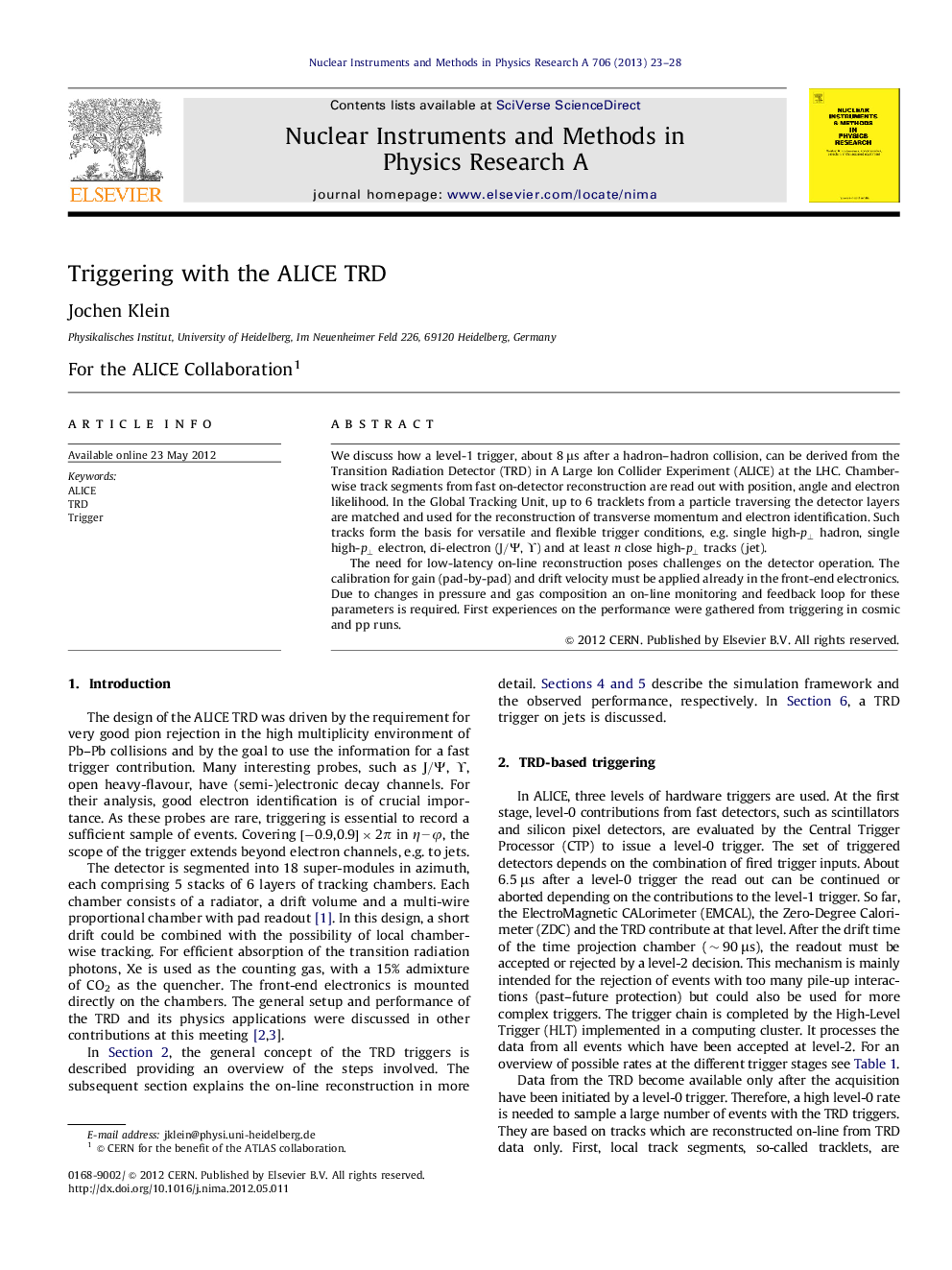| Article ID | Journal | Published Year | Pages | File Type |
|---|---|---|---|---|
| 1823253 | Nuclear Instruments and Methods in Physics Research Section A: Accelerators, Spectrometers, Detectors and Associated Equipment | 2013 | 6 Pages |
We discuss how a level-1 trigger, about 8μs after a hadron–hadron collision, can be derived from the Transition Radiation Detector (TRD) in A Large Ion Collider Experiment (ALICE) at the LHC. Chamber-wise track segments from fast on-detector reconstruction are read out with position, angle and electron likelihood. In the Global Tracking Unit, up to 6tracklets from a particle traversing the detector layers are matched and used for the reconstruction of transverse momentum and electron identification. Such tracks form the basis for versatile and flexible trigger conditions, e.g. single high-p⊥high-p⊥ hadron, single high-p⊥high-p⊥ electron, di-electron (J/ΨJ/Ψ, ϒϒ) and at least n close high-p⊥high-p⊥ tracks(jet).The need for low-latency on-line reconstruction poses challenges on the detector operation. The calibration for gain (pad-by-pad) and drift velocity must be applied already in the front-end electronics. Due to changes in pressure and gas composition an on-line monitoring and feedback loop for these parameters is required. First experiences on the performance were gathered from triggering in cosmic and ppruns.
